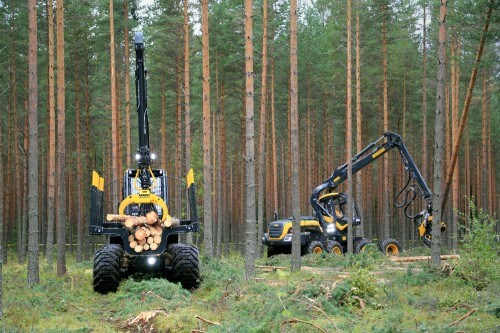Humans have been using trees for their needs for 12 thousand years, and over the years more and more forests are cut down. The situation is very worrying; And if we continue to harm the forests, we will also be harmed

By: Ariel Keres, young Galileo
Many of the objects we use every day are made of wood: furniture, fences, toys, musical instruments and of course the paper we consume, in many countries wood is the main building material and also in Israel wood is used for various building purposes. In order to supply wood and its products to the whole world, humans cut down many trees, and thus the great forests of the world are severely damaged.
The problem: the forest areas
The state of the forests is a cause for concern because humans have been exploiting them since the Stone Age. About 12 years ago, the people who lived in our area gradually moved from a life of hunting and wandering to living in permanent settlements and engaging in agriculture. They used wood to build houses, for heating, to build fishing boats and ships, and later to heat industrial furnaces, locomotives and more. Since man began to engage in agriculture, almost half of the forest areas in the world have been cultivated for his needs.
Even today we have many reasons to cut down forests: the need for pastures for herds of cows, the clearing of areas for agriculture (for example, for the cultivation of soybeans or the production of palm oil) and for construction, the use of wood for energy and the production of wood products, and more. The destruction of forests causes many dangers, for example: trees absorb carbon dioxide from the atmosphere and produce oxygen that we and the other creatures in the world need to breathe, which is why the world's forests are called our "green lungs". If we damage the forests - the oxygen production process will be greatly reduced and entire ecological systems will be damaged.
possible solutions
Many countries understand the need to preserve the world's forests, so they approve laws to preserve the forests, increase enforcement, declare extensive nature reserves and protected species, and plant many trees in place of those that have been cut down.
Protecting the forests is not just a matter of policy or politics. Each and every one of us can help the world's forests to flourish. For example, when we travel in the forest we will not light a bonfire or fire of any kind (for example, the huge fire started in the Carmel forests a few years ago); When we go on a picnic with the family, we will make sure to collect all the waste after us, and not leave it in the area - the waste damages the delicate ecology of the forest; It is important to throw away paper and cardboard in the designated recycling bin - this way the paper industry will need fewer raw materials and fewer trees will be burned; Of course, it is worthwhile to plant a tree or two in Tu Bashvet and at every opportunity Irat and increase the amount of trees in our country.
What's going on in the world?
The countries of India and Bangladesh realized that cutting down the mangrove trees and mangrove bushes growing on their coasts causes soil erosion and endangers the coasts and the millions of people living near them. These countries, like many others, are working to change the situation and replant hundreds of thousands of mangrove trees and other trees. Apart from these countries, which approve laws to preserve the forests, global green organizations such as Greenpeace are fighting to reduce deforestation in the world and to protect the environment. Greenpeace and other organizations managed to get huge corporations like Nestlé - which produces, among other things, breakfast cereals - to leave the rainforests of Indonesia. But there are other countries, such as the countries of equatorial Africa or Brazil, where the vast Humazones forest is located, that continue to destroy their forests, and the solutions are not in sight.
What is happening in Israel?
If there are countries that are interested in learning how to protect the forests and even increase their area, they can contact us! When the pioneers arrived in the Land of Israel, there were almost no forests here, but over the years the National Fund for Israel planted more than two hundred million trees, and the State of Israel continues to increase the area of its forests, despite environmental problems such as fires, population density and accelerated construction. Today, the forest area in the country is approximately one million dunams, and more is on the way. Tu Bashvet, our greenest holiday, is used every year to plant thousands of new trees.
What does the future hold?
According to the conclusions of many researchers, the human race cannot survive without forests. It may sound surprising, but even a technological world like ours depends on the preservation of its forests. If we do not stop using wood and its products, and if we continue to destroy forests for our needs, we will encounter serious problems in the near future, such as soil erosion, floods (due to the soil being washed into riverbeds) and damage to entire ecosystems. It seems that thanks to public pressure, law enforcement and proper management of the reservoirs - the state of the world's forests is slowly improving. Nevertheless, this is only the beginning of the long struggle to preserve the wonderful forests of our world.
The movie "The Lorax", based on the famous book by Doctor Seuss, illustrates what happens when all the trees are cut down. To watch the trailer:
The article was published in the September 2014 issue of Young Galileo
Want to read more? To receive a young Galileo magazine as a gift
